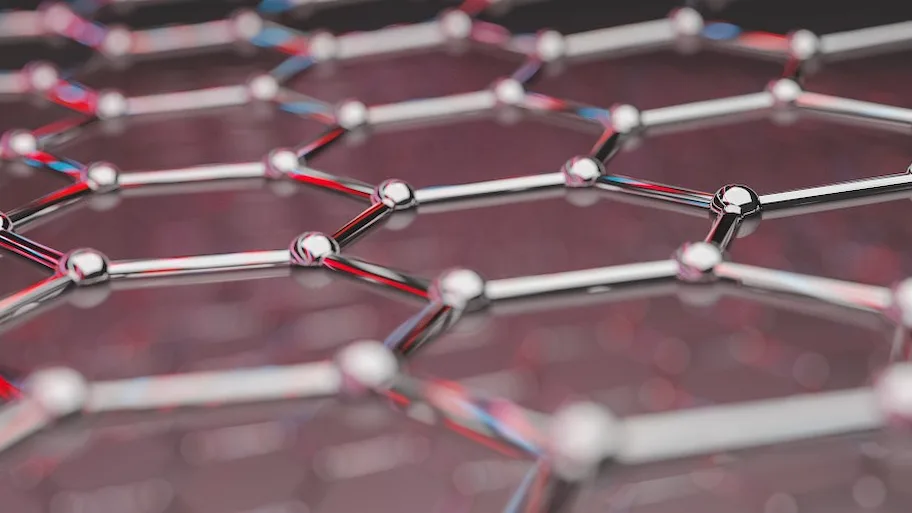
- Science news
- Engineering
- 5 articles you need to check out on the future of materials research
5 articles you need to check out on the future of materials research
By Angharad Brewer Gillham, Frontiers science writer

Image: Shutterstock.com
In a fast-moving field of research like materials science, it can be difficult to keep up with the latest breakthroughs. Now at Frontiers, we highlight just five of the latest research articles to shed more light on the way we build our world around us, published by top researchers in the Frontiers in Materials Research Topic 'Horizons in Materials'.
Growing green technology: from trees to tech
Scientists aiming to power the appliances of the future are developing special phenolic compounds from resins instead of petrol – a first step towards organic electrodes. Since biomass is the only green, renewable source of carbon materials, carbon-based electrodes for new-generation metal-ion batteries could be a more eco-friendly replacement for lithium-ion batteries. Some of the methods to make these compounds currently available are problematic because they require dangerously high temperatures and pressures and hazardous chemicals, but new methods are being developed which use mechanical forces instead.
If these compounds can be developed into renewable sources for electronics, Dr Javier Quílez-Bermejo and his team at the Université de Lorraine point out, the potential for revolutionizing electronic devices would be huge, opening the way for greener fuel cells, rechargeable batteries, and supercapacitators.
Article link: https://www.frontiersin.org/articles/10.3389/fmats.2022.810575/full
Digital doppelgangers test materials in the lab
A collaboration between scientists at the Georgia Institute of Technology and the Center for Integrated Nanotechnologies in New Mexico, US has laid out an effective framework for building digital ‘twins’ of materials which could model stress-tests using the real properties of the materials, making research and development safe and effective at every stage. Machines like turbine engines on a plane may go through many design iterations; these digital twins would allow for the safety profiles and performance of each to be compared in detail and modeled over time.
While digital twins of components already exist, extending this to the level of the materials used to make them would improve their predictive power and usefulness. By combining granular data about material properties, shared using the principles of findability, accessibility, interoperability, and reusability (FAIR), a Bayesian prediction framework for forecasting how those materials perform over time, and heavy-duty cyberinfrastructure to support the immense data streams necessary, we can test new designs more easily and cheaply.
Article link: https://www.frontiersin.org/articles/10.3389/fmats.2022.818535/full
Can we use plants to send satellites to space?
Probes and vehicles that fly through the atmosphere to low Earth orbit and beyond need thermal protection systems to protect them from the very high temperatures they experience as they fly. These systems are made from carbon/carbon composites, very often carbon/phenolic composites, which are currently mostly made from petroleum-based materials. Replacing them with more eco-friendly materials derived from biomass would make an appreciable contribution to a greener space economy: Dr Maurizio Natali and his team at the University of Perugia review the options.
The challenge is significant. Although biomass does have the potential to provide chemically identical replacements for hydrocarbon-based materials, for the materials to be truly green, they need to be renewable, and in order to meet the standards of the aerospace industry the supply needs to be consistent, high-quality and regular. Lignin as a byproduct from pulping wood for paper shows potential but needs a long stabilization time and doesn’t currently meet aerospace requirements, while cellulose-based products have low carbon yields. Biobased cyanate esters from lignin derivatives like vanillin are promising but expensive to produce. For all the materials considered by the authors, there are serious concerns about reaching the right level of consistency and achieving production methods which are not environmentally costly, but there is still promise for future research – and potentially, in the future, greener spaceflight.
Article link: https://www.frontiersin.org/articles/10.3389/fmats.2022.805131/full
How anti-corrosion coatings take their medicine
Many metal objects need to be protected against corrosion, which can damage them and cause breakage and potentially failure of the system they’re part of. One of the most common ways to do so is to cover them in an organic coating which will isolate them from corrosive elements, but those organic coatings can suffer wear and tear which will compromise protection of the metal components and eventually functioning of the device – so we need coatings that can protect themselves.
Initially, a team led by Dr Yue Zhang of Beihang University said, researchers tried using very tiny capsules to include healing agents for those coatings in the coatings themselves – almost like a patient taking medicine in a capsule. Unfortunately, the capsules weren’t small enough for thin coatings, and tended to deliver their protective agents all at once, providing little protection in the long term. Further experimentation has found that it is possible to change the loading of the capsules, make them small enough, and change the material used for the casing to make their response to corrosion more nuanced and effective, releasing the corrosion inhibitors inside only when the coating becomes damaged.
With coatings that contain their own medicine, every piece of public infrastructure that contains metal vulnerable to corrosion is safer for us to use.
Many metal objects need to be protected against corrosion, which can damage them and cause breakage and potentially failure of the system they’re part of. One of the most common ways to do so is to cover them in an organic coating which will isolate them from corrosive elements, but those organic coatings can suffer wear and tear which will compromise protection of the metal components and eventually functioning of the device – so we need coatings that can protect themselves.
Initially, a team led by Dr Yue Zhang of Beihang University said, researchers tried using very tiny capsules to include healing agents for those coatings in the coatings themselves – almost like a patient taking medicine in a capsule. Unfortunately, the capsules weren’t small enough for thin coatings, and tended to deliver their protective agents all at once, providing little protection in the long term. Further experimentation has found that it is possible to change the loading of the capsules, make them small enough, and change the material used for the casing to make their response to corrosion more nuanced and effective, releasing the corrosion inhibitors inside only when the coating becomes damaged.
With coatings that contain their own medicine, every piece of public infrastructure that contains metal vulnerable to corrosion is safer for us to use.
Article link: https://www.frontiersin.org/articles/10.3389/fmats.2021.795397/full
How lithium and aluminium could make concrete last longer
Concrete may seem permanent, but as it ages, it’s vulnerable to dangerous alkali-silica reactions, which cause it to expand and break down. Dams, pavements and buildings can all be left at risk, with dangerous consequences for the people who use them. Concrete scientists Dr Zhenguo Shi and Dr Barbara Lothenbach examine potential solutions: lithium salts and aluminium.
Lithium salts can be added when the concrete is mixed as a preventive solution but can also be used to protect the concrete later – although the optimal dosage and timing for intervention is hard to determine, and scientists are not sure which delivery method is most effective - while aluminium is included in the concrete as a preventive. Aluminium slows down the alkali-silica reaction so it doesn’t affect the concrete so quickly, offering approximately two years of complete protection, but since concrete infrastructure is generally in service for much longer than that, a more long-lasting solution is needed. Shi and Lothenbach suggested that we might find it in a combination of lithium and aluminium. There is good evidence that combining the two would offer even more long-lasting protection, although more investigation is needed – while the combination seems to be protective, we don’t yet know exactly why or how.
Article link: https://www.frontiersin.org/articles/10.3389/fmats.2021.796396/full
REPUBLISHING GUIDELINES: Open access and sharing research is part of Frontiers’ mission. Unless otherwise noted, you can republish articles posted in the Frontiers news site — as long as you include a link back to the original research. Selling the articles is not allowed.






